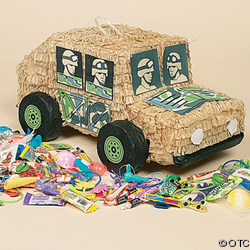-
Today the FDA released a draft risk assessment re: meat and milk derived from cloned animals, which basically said that it's not dangerous at all. Of course, why should it be? If the animal is really a clone, there's no reason to expect there's anything wrong with it that wasn't wrong with the original animal. And since cloning is still really expensive, it appears (i.e. the Times and the FDA tell me) that the technology will, for the foreseeable future, only be used to preserve good breeds, not to mass-produce critters. It's not like they have accelerated-aging tanks full of green goo, which I'm pretty sure is the crucial missing link between what we can do now and what they did in Episode II. Maybe we'll end up eating the grandchildren of a clone of an especially genetically awesome cow or something, but who really cares?
Everyone, apparently. Or enough stupid consumer groups to get the story in the news. Look, I'm perfectly willing to believe that the FDA would approve some nasty technology because an influential or rich company wanted it approved, but here I'm much more inclined to side with the scientists than with the self-appointed advocates who clearly haven't read the 700+ pages that the FDA released today, let alone the published studies they're based on, and who can only profit from further confusing the public about what cloning actually is. Even BoingBoing — BoingBoing, of all places/people/blogs! — seems to think that clonemeat is icky, that it's going to be in stores tomorrow, and that, I don't know, it probably has DRM on it or something. Yeesh.
Admittedly, though, I'm a little uneasy over this phrase from the FDA's press release: "The draft risk assessment…draws science-based conclusions." Are those like faith-based initiatives?
And there's still the strange phenomenon of the giant clone fetus, known among scientists as "Large Offspring Syndrome" (LOS — no Wikipedia page!), which hardly sounds more official if you ask me. Basically, when you clone some animals (mice are apparently exempt), the babies sometimes turn out big and deformed and nasty. Also, "LOS newborns may appear to be edematous (fluid filled)," but that happens to the best of us from time to time. Anyway, the mysterious and disgusting placenta seems to be the culpable party in all this, as well as the even more awesome fact that clonebabies sometimes have huge belly buttons. So blame the placentae, not the cloners. Placentae are like mitochondria and cats: always plotting something.
-
Science quote of the day:
Obesity in late-gestation cattle is a commonly reported problem resulting in anorexia…
If only it worked that way in humans…
-
Now out of date, but probably worth mentioning, via BoingBoing: an "Army vehicle piñata" for your next jihadarama:

-
Another leftover, explanation of which would ruin the effect:

Those are all the headlines for now, sports racers!
No comments:
Post a Comment